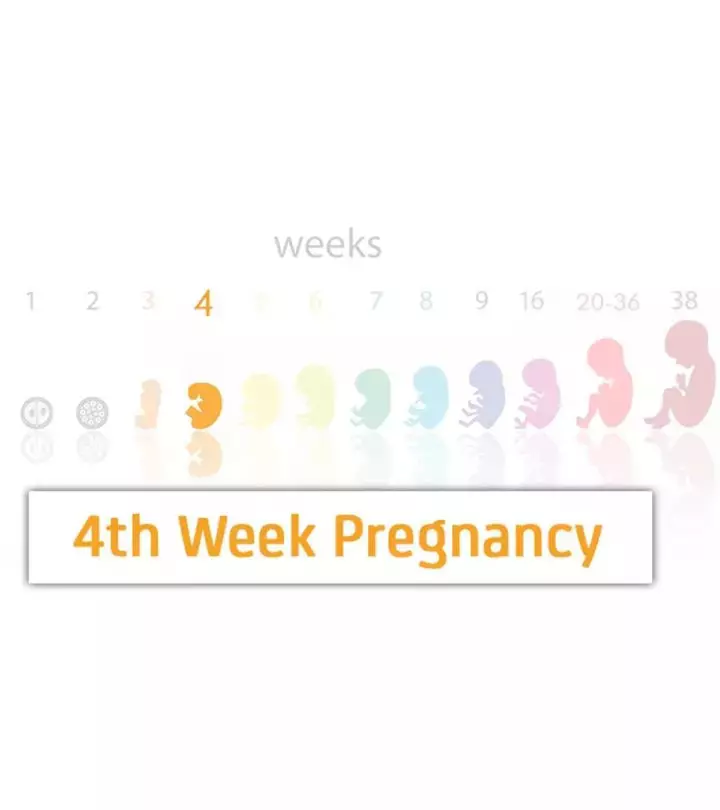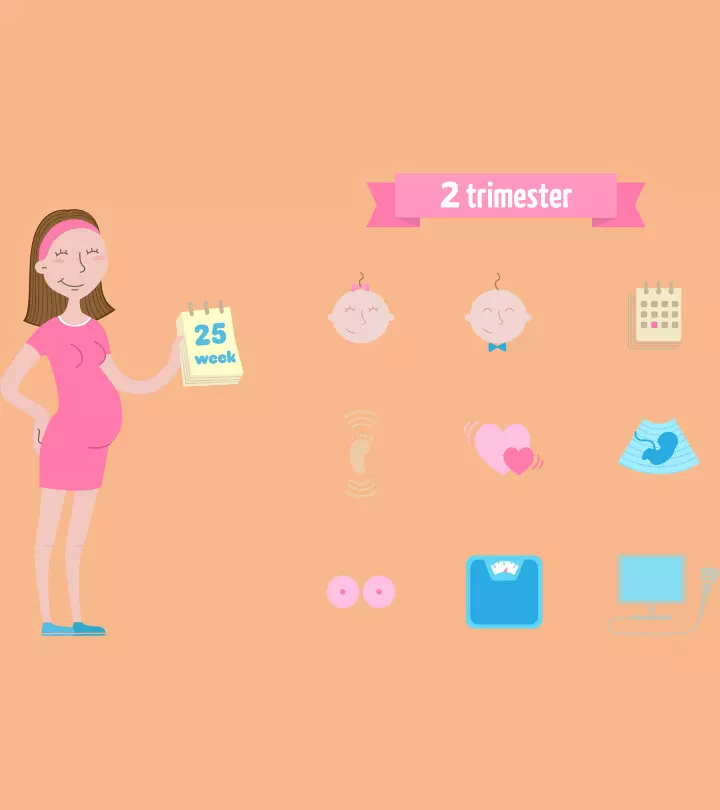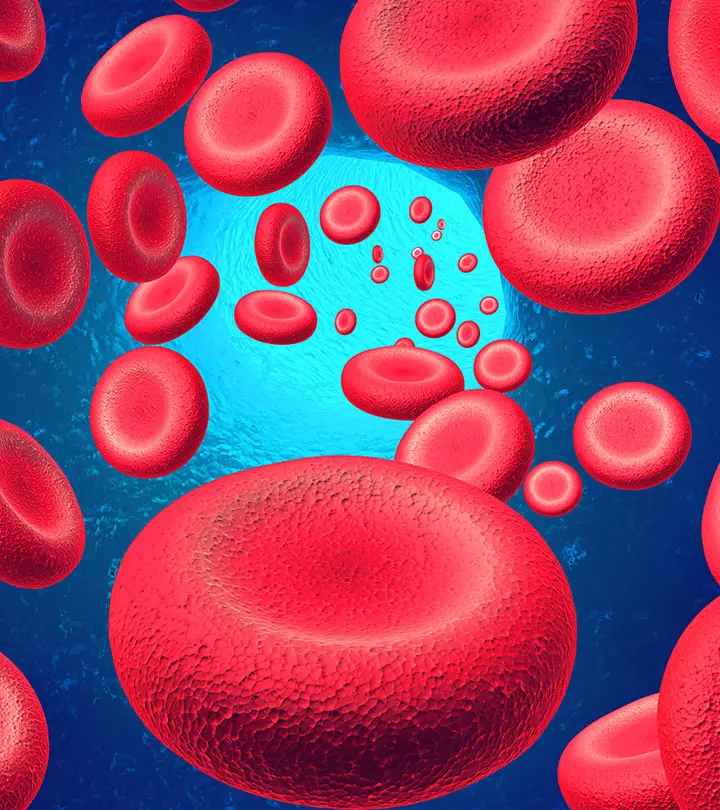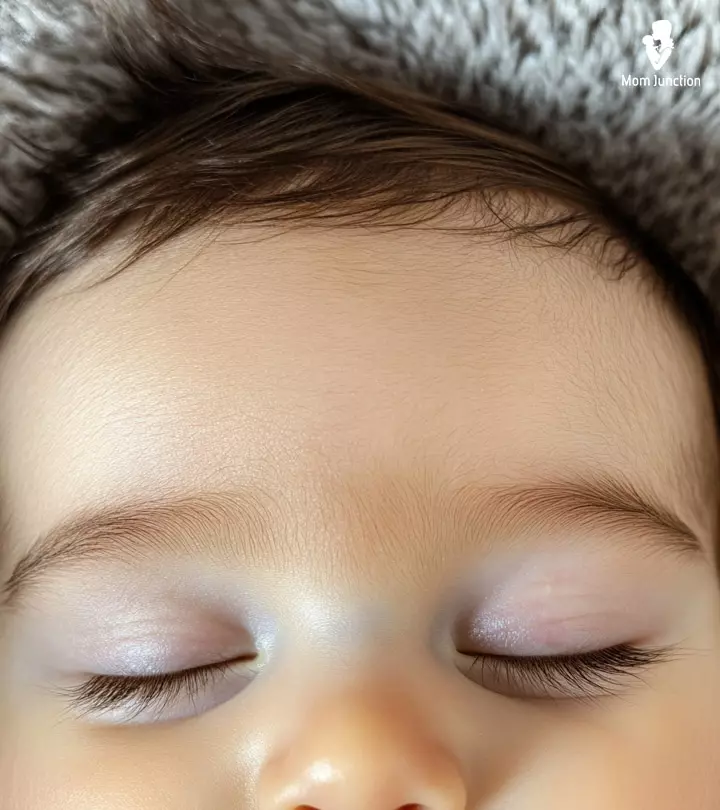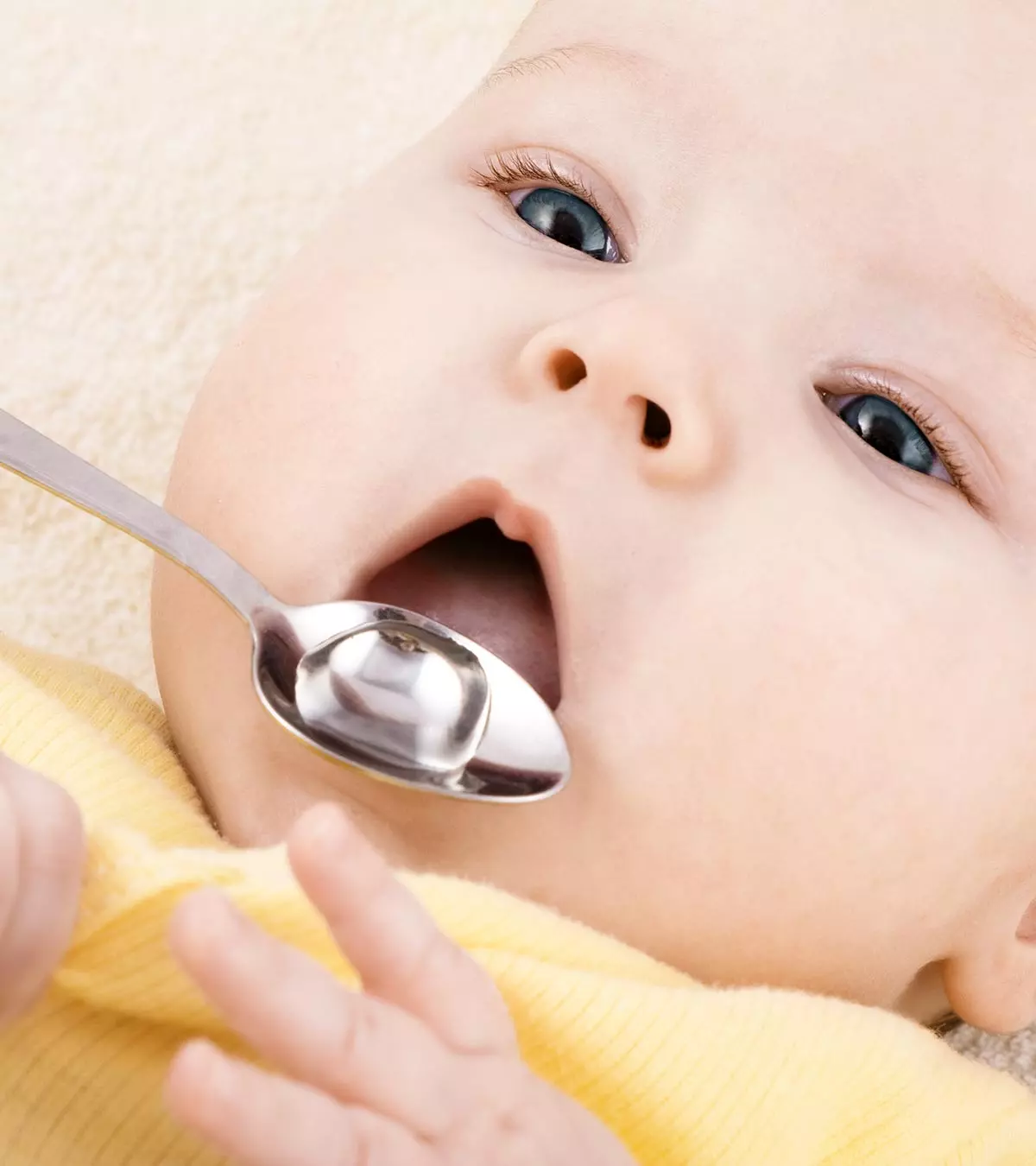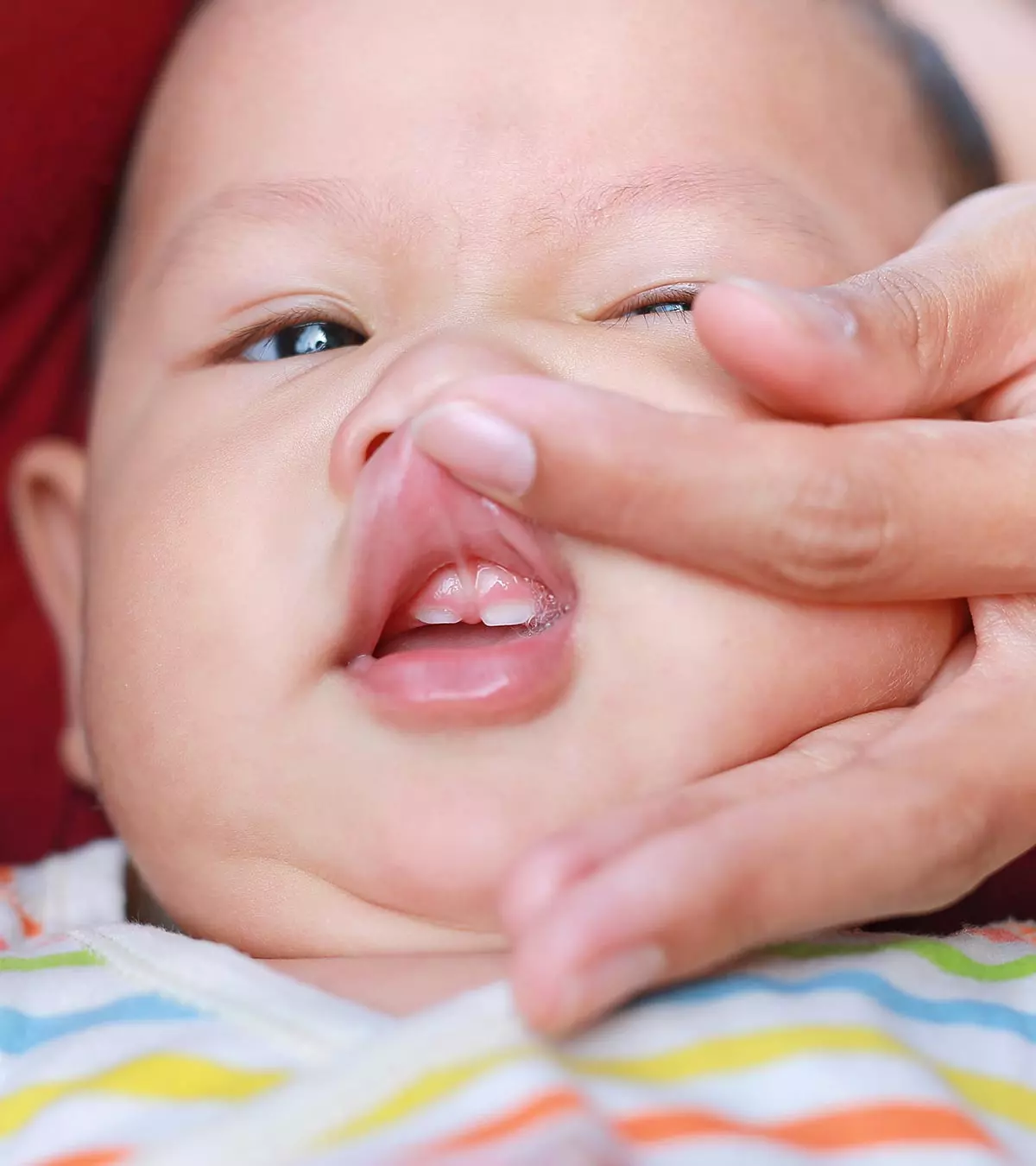
Image: Shutterstock
The sight of a baby crying can worry parents for sure. Nevertheless, it is common for babies to cry for a total of three hours a day. Crying serves various purposes and may communicate different emotions of the baby. In some cases, crying might only be their way of telling you that they need attention and care. As time passes, you may be able to tell apart various types of cries and learn ways to manage them effectively.
Read on to know why babies cry, how to understand their cries, and ways to cope with their crying spells.
Key Pointers
- Crying serves as a means of communication for infants to express their emotions to caregivers.
- A baby’s cry can stem from a range of reasons, including hunger, tiredness, overfeeding, soiled diapers, pain, colic, or a need for attention.
- A baby’s tone or specific needs can help distinguish different cries, such as hunger, tiredness, or discomfort.
- Various techniques, including swaddling, patting, white noise, walks, singing, baths, or massages, can soothe a crying baby.
- Caregivers can benefit from seeking assistance or taking a break in cases of persistent crying.
Why Do Babies Cry?

All babies cry, and they do so to communicate with their caregivers. Since babies cannot talk, crying or sobbing works as an innate natural way to share their feelings and emotions, often related to their basic needs. Below are the common reasons why babies cry (1) (2).
- Hunger
- Sleepiness
- Overfeeding
- Uncomfortable clothing or ambiance
- Soiled diaper
- Pain or discomfort
- Colic
- Attention and cuddling
Some breastfeeding babies may cry as an effect of food items consumed by the mother. For instance, lactating mothers who consume too much coffee may notice their baby often crying since caffeine can reach the baby through breast milk. It may lead to difficulty falling asleep, crankiness, and crying.
 Did you know?
Did you know?Older babies may figure out cause and effect. Therefore, they may cry only to gain their parents’ attention and cuddles. Contrary to popular beliefs, gassiness and spitting up do not cause a baby to cry unless they are associated with a problem that causes pain, leading to a baby crying.
What Are The Types Of Baby Crying?
You may gradually notice certain types of cries or that specific actions address certain cries. These cries may vary from one baby to another. Below are the most common types of cries seen in babies associated with their basic needs.
- Hungry cry: Newborn babies often feed about eight to 12 times a day (3). Thus, they may express their hunger by crying. These cries stop once you initiate feeding, with the baby calming down immediately. Once you are done feeding, the baby is calm and satiated. A baby’s cries due to hunger may often turn into loud wailing if you do not address them on time (4).
- Sleepy cry: Most newborns sleep for about 16 to 18 hours out of 24 hours of a day (5). A baby may get tired quickly, and if not placed to sleep, it is inevitable for them to cry. In other scenarios, if your baby wakes up all of a sudden after you have put them down to sleep and cannot find you anywhere near, they will become upset and start weeping or crying excessively.
 Quick tip
Quick tip
- Uncomfortable cry: It could be due to soiled diapers, unfavorable ambient temperature, or clothing. You may be able to tell this crying apart because it may occur outside of the baby’s usual sleeping or feeding time. You may check the baby’s diapers or the temperature of their room, which may contribute to their unhappy mood. In some cases, a change of clothing may help calm the baby, especially if the weather is warm.
How To Soothe A Crying Baby?
Most babies calm down when their fundamental needs, such as feeding and changing diapers, are addressed. Nevertheless, there could be moments when the distressed baby is overly fussy, inconsolable, and cranky that you may need extra efforts to calm them down. You may try the following interventions in such cases (6).
- Swaddle them gently in a warm cloth or blanket and cuddle with them.
- Pat their chest or gently stroke their head while talking to them softly.
- Introduce white noise in the room where your baby is sleeping and omit any distractions or loud noises. White noise refers to sound that masks loud sounds naturally occurring in the environment.
- Take them for a walk around the house or out in a stroller or baby carrier around the neighborhood.

Outlining her approach to soothing her daughter, Sabine Hossenfelder, a physicist and mother of two, shares, “You don’t need a degree to know that a baby cries if she’s unhappy. After a few weeks, I had developed a troubleshooting procedure roughly like this: Does she have a visible reason to be unhappy? Does she stop crying if I pick her up? New diaper? Clothes comfortable? Too warm? Too cold? Is she bored? Is it possible to distract her? Hungry? When I had reached the end of my list, I’d start singing. The singing almost always helped (i).”
How To Cope With A Baby’s Crying Spells?
There could be times when the baby’s crying, whimpering or bawling may be persistent, driving you to exhaustion and frustration. In such cases, try the following ways to cope with the baby’s crying (6).
- Take the help of a family member or friend. Sometimes, seeing another face is enough distraction to calm the baby down.
- If you do not have anyone around, place the baby in a crib, ensure they are safe, go to the next room, and calm yourself down. Take a break to clear your thoughts and then return to the baby.
- Do not get overwhelmed by the baby’s crying or let it demoralize you. Remember, crying, moaning, or groaning is an innate tendency of all babies. If your baby cries, it does not mean that you are a bad parent.
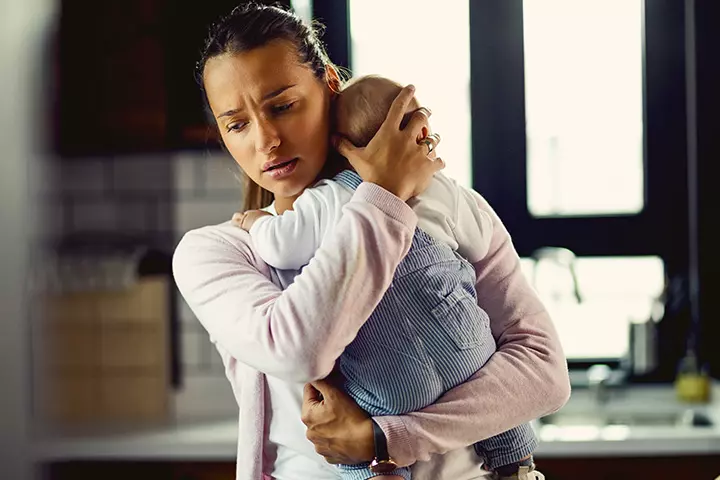
 Research finds
Research findsWhen To Call The Doctor?

Consult a doctor about your baby’s crying in the following scenarios (2).
- The baby’s crying is accompanied by fever, vomiting, diarrhea, or pale skin. This may indicate illness.
- The baby cries when you touch their abdomen or a part of the body, indicating they may be in pain.
- The crying continues for several hours at a time or does not seem to go away even when the baby’s needs are met and they are healthy. Such squalling could be colic in babies especially when the cries are for no explained reason.
Frequently Asked Questions
1. How long is too long for a baby to cry?
In the first three months, a baby may cry for up to five hours, which is considered a regular part of their development. However, as they reach the age of 10 to 12 months, they may cry one hour a day on average (7). Hence, you should watch out for any concerning symptoms if the crying exceeds one hour.
2. Can babies get brain damage from crying?
No. Crying by itself cannot cause brain damage. Some research indicates that if a baby’s crying is ignored for too long by the caregivers, it might increase cortisol, a stress hormone, which might affect brain development (8). However, more research is needed to form a conclusive correlation.
3. Is it true that some babies cry more than others?
Crying patterns may vary greatly among newborns and infants, with some babies crying more frequently than others. Also, every baby has a different temperament and may display their feelings uniquely (12).
4. Why do babies cry during feeding?
Babies may cry during a feeding session due to latching issues, uncomfortable positions, or health problems such as reflux. If a baby cries mid-feed, it indicates they might be full. Bottle-fed babies may cry if the teat flow is wrong, which can be resolved by using the correct teat for the baby’s age and sucking ability. Additionally, hunger and overtiredness may also lead to crying while feeding. Creating a comfortable feeding environment and a consistent feeding schedule may help reduce the crying and fussiness.
Babies frequently cry in the first few months after birth. But dealing with these crying spells can be emotionally and physically demanding and difficult for parents. These cries may be baby hunger cues or indicators of discomfort, but there may also be no apparent reason behind them. In such cases, swaddling your baby or spending some time with them usually helps soothe them. However, if you notice your baby crying more frequently, accompanied by other signs of concern, talk to a pediatrician about it.
Infographic: Signs Requiring Medical Care When The Baby Is Crying
A baby may cry for several reasons, from hunger to attention or when sleepy or needing a diaper change. However, sometimes, babies’ constant cries might make you worry, especially when you don’t know the reason for crying. Check out the infographic below to learn about various signs that indicate you must seek a medical opinion for your baby’s crying. Illustration: Momjunction Design Team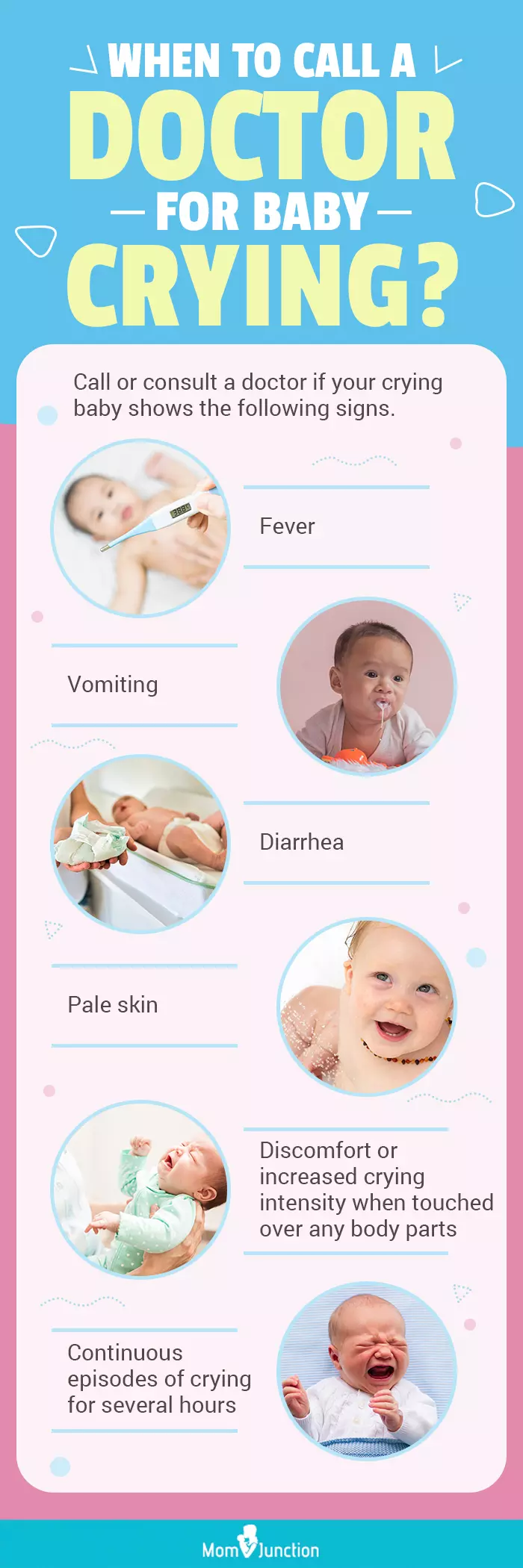
Illustration: Baby Crying: Types Reasons And Tips To Cope With It

Image: Stable Diffusion/MomJunction Design Team
Is your baby crying all the time and you just want to know why? Watch this video to learn about what makes babies cry, and how you can respond.
Personal Experience: Source
MomJunction articles include first-hand experiences to provide you with better insights through real-life narratives. Here are the sources of personal accounts referenced in this article.
i. Why does the baby cry? Fact sheet.https://backreaction.blogspot.com/2012/08/why-does-baby-cry-fact-sheet.html
References
- Newborn behaviour: an overview.
https://raisingchildren.net.au/newborns/behaviour/understanding-behaviour/newborn-behaviour - Crying Baby – Before 3 Months Old.
https://www.seattlechildrens.org/conditions/a-z/crying-baby-before-3-months-old/ - How Often and How Much Should Your Baby Eat?
https://www.healthychildren.org/English/ages-stages/baby/feeding-nutrition/Pages/How-Often-and-How-Much-Should-Your-Baby-Eat.aspx - Responding To Your Baby’s Cries.
https://www.healthychildren.org/English/ages-stages/baby/crying-colic/Pages/Responding-to-Your-Babys-Cries.aspx - Infant Sleep.
https://www.stanfordchildrens.org/en/topic/default?id=infant-sleep-90-P02237 - Soothing a crying baby.
https://www.nhs.uk/conditions/baby/caring-for-a-newborn/soothing-a-crying-baby/ - How much crying is normal for a baby?
https://www.nct.org.uk/information/baby-toddler/caring-for-your-baby-or-toddler/how-much-crying-normal-for-baby - The evidence on babies, sleep, and crying.
https://evidencebasedliving.human.cornell.edu/blog/the-evidence-on-babies-sleep-and-crying/ - Mariano Chóliz et al., (2012); Infant crying: pattern of weeping, recognition of emotion and affective reactions in observers.
https://pubmed.ncbi.nlm.nih.gov/23156907/ - Bedtime habits for infants and children.
https://medlineplus.gov/ency/article/002392.htm - Sarah Oldbury and Karen Adams; (2015); The impact of infant crying on the parent-infant relationship.
https://pubmed.ncbi.nlm.nih.gov/25812239/ - All Babies Cry.
https://www.justonenorfolk.nhs.uk/emotional-health/children-young-peoples-emotional-health/all-babies-cry/#
Community Experiences
Join the conversation and become a part of our nurturing community! Share your stories, experiences, and insights to connect with fellow parents.
Read full bio of Dr. Anuradha Bansal
Read full bio of Sanjana Bhattacharjee
Read full bio of Rohit Garoo
Read full bio of Apoorva K





